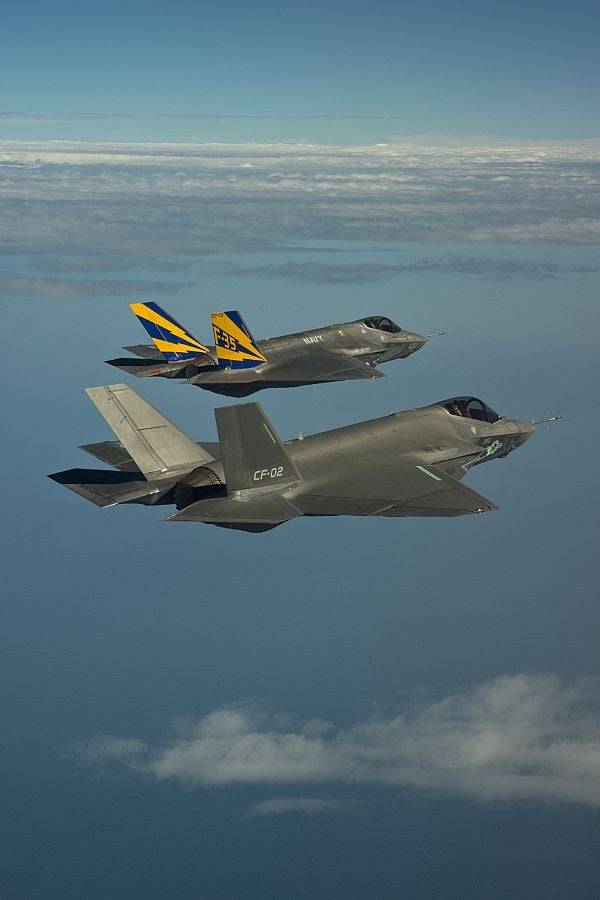
The US Navy’s second F-35C Lightning II carrier variant test aircraft has completed initial pit drop testing at Naval Air Station Patuxent River, Maryland, US, marking successful conclusion of ground weapons ejection test series for the variant.
During the testing, inert GBU-31 joint direct attack munitions (JDAM) and GBU-12 Paveway II laser-guided bombs were dropped by the second Lockheed Martin-built F-35C test aircraft, marked as CF-2, from the two weapon bays onto a foam-covered pit floor.
The CF-2 team ejected 11 bombs, including the AIM-120 advanced medium-range air-to-air missile (AMRAAM) during the pit-drop testing, validating the aircraft’s capability.
Data collected by the team during testing will help measure stresses on the airframe and adjacent stores, ensure proper function of weapon and suspension equipment, as well as validate the separation models for the munitions’ ejection characteristics such as trajectories and velocities.
F-35 naval variants test and evaluation director captain Erik Etz said the integrated government and industry team would conduct in-flight weapons separation work from the F-35 in the near future.
The stealthy, supersonic multi-role F-35 Joint Strike Fighter (JSF) is currently under development by Lockheed and has been undergoing flight tests since late 2006.
A carrier variant of the JSF, the F-35C, features larger wing control surfaces and reinforced landing gear to operate in the maritime environment.
Powered by a single Pratt & Whitney F135 turbofan engine, the F-35C can fly at a maximum speed of 1,960km/h and can be launched through steam catapult and recovered by using tailhook arrestor.
The aircraft is also being developed in two other variants, conventional takeoff and landing (CTOL) variant for the US Air Force, and a short takeoff and vertical landing (STOVL) aircraft for the US Marine Corps and UK Royal Navy.
Image: The US Navy’s first two F-35 test aircraft, CF-1 and CF-2, undergoing formation flying qualities test. Photo: US Navy photo courtesy of Lockheed Martin/Layne Laughter/Released.




